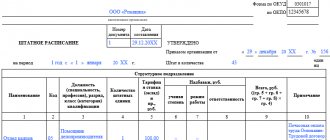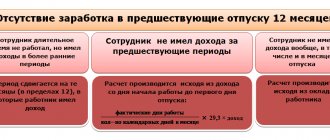Payroll calculation made easy!
Automated calculation of salaries, personal income tax and contributions in a few clicks.
The service itself will generate reports on employees. Save your time. Try for free
If you start reading a book on payroll calculation, you will probably find in it a description of such remuneration systems or methods of calculating wages: time-based, piece-rate, time-based bonus, bonus, commission, etc. These systems are not described in legislation; they exist in expert articles and opinions. An employer can adopt its own remuneration system, fix it in local regulations and apply it in the organization.
What is salary according to the Labor Code
The term “salary”, as well as the accompanying definitions “basic salary”, “official salary” and “wages” are deciphered in Art. 129 Labor Code of the Russian Federation. To understand how to calculate the salary from the salary and apply the appropriate formula, let’s understand these terms:
Based on the definitions given in the Labor Code of the Russian Federation, salary is the minimum fixed amount of money that the employer is obliged to pay to the employee for each month worked, subject to the fulfillment of the job duties assigned to him.
Salary is a more expanded concept, which includes, in addition to salary, various additional payments, bonuses and bonuses to which an employee is entitled.
Salary and wages are the same in value if for a fully worked billing month the employee, in addition to the salary, is not accrued compensation and incentive payments.
Wages can be calculated not only on the basis of salary, but also on the basis of the tariff rate - a fixed amount of remuneration for fulfilling a standard of work of a certain complexity per unit of time (hour, day, decade, month) without taking into account compensation and additional payments.
The formulas for calculating wages based on salary and based on the tariff rate are different. Next, we will tell you how to correctly calculate salary based on salary.
The influence of the regional coefficient on wages
In regions where working conditions are considered special due to climatic conditions, terrain or increased radiation levels, a regional coefficient is added to employee salaries. It should not be confused with northern allowances for employees of the Extreme Server. The area of application of the regional coefficient is much wider.
The size of the coefficient is established by the Government of the Russian Federation specifically for each region. There is no single regulatory act; a separate resolution is issued for each district. The lowest coefficient - 1.15 - is in the Vologda region, as well as in most regions of the Ural Federal District: Perm, Sverdlovsk, Orenburg, Chelyabinsk, Kurgan regions. A similar coefficient applies in Bashkortostan and Udmurtia.
The regional coefficient is applied not to the salary, but to the actual amount of the salary before personal income tax is deducted from it. To calculate, you need to sum up the salary with all allowances and bonuses, with the exception of one-time payments (such as sick leave and financial assistance), and multiply the resulting total by a coefficient. For example, in one of the cities of the Chelyabinsk region, with an employee’s salary of 30,000 and a bonus of 7,500 rubles, the salary calculation will look like this:
(30,000 + 7,500) × 1.15 = 43,125 rubles (salary before personal income tax);
43,125 –13% = 37,518.75 rubles (take-home salary).
How to correctly collect source data for payroll calculations
To calculate wages based on salary, initial data is collected:
- about the amount of salary;
- number of working days in the billing month;
- number of days worked in a month;
- payments due to an employee in addition to salary.
Where can I get this data from?
Salary size
Salaries for each position are reflected in the staffing table:
In addition, the salary amount must be specified in the employment contract:
And also reflected in the employment order:
Number of working days in the billing month
The working days for each month are calculated based on the production calendar. This indicator depends on the length of the working week: from Monday to Friday (five-day week) or in another mode (for example, with a working Saturday):
Number of days worked in the billing month
This indicator for calculating wages is taken from a time sheet or other document with which the company records days worked, rest days and other periods (business trips, sickness absence, absenteeism, vacations, etc.).
Payments due to an employee in addition to salary
Premiums, additional payments, compensations, bonuses and other payments that an employee can count on in addition to salary are established in employment contracts, agreements, orders or other internal regulations (collective agreement, regulations on remuneration, etc.).
Bonus (commission) wage system
This payment system is usually used for employees on whose work the company’s revenue directly depends. For example, for sales managers, sellers. With such a system, there is usually a small constant part (calculated based on work time), and there is a bonus part, which depends on the revenue in each specific month or on the total amount of issued/paid invoices for a particular sales manager.
We examined the main remuneration systems in their purest form. In practice, these systems are usually found with additions and changes, for example, time-bonus or piece-progressive. Employers themselves develop a payment system depending on the needs of their organization. The main thing is that employees are familiar with local regulations that describe the payment system, and understand what indicators their salary depends on and what parts it consists of.
In the online service Kontur.Accounting, it is easy to calculate salaries, maintain personnel documents, and report on employees. There is also accounting, reporting, financial control and other tools. Test the service for free for the first two weeks of operation.
Try for free
Basic calculation formula
The basic formula for calculating wages based on salary is:
Using the basic formula, you can calculate the salary if in the billing month the employee does not receive bonuses and other payments in addition to the salary.
We will demonstrate the calculation of salary based on an example.
Employees of Kornet LLC work on a five-day basis. The salary regulations of Kornet LLC indicate that the company's employees are paid a monthly bonus in the amount of 15% of the salary. But there is a limitation: the bonus is not paid if the employee did not fulfill the production plan in the billing month and/or received a disciplinary sanction.
Janitor Samoilov P.G. received a reprimand in January 2021 for absenteeism. As a result, out of 15 working days in January (according to the production calendar for a five-day working week), he worked only 14. His salary, according to the staffing schedule approved for 2021, is 16,250 rubles.
Considering that in the billing month P. G. Samoilov is not paid any additional amounts of an incentive or compensation nature, the basic formula can be used to calculate wages:
Salary = 16,250 rub. / 15 days × 14 days = 15,166.66 rub.
In this amount, P. G. Samoilov’s salary will be accrued for January 2021.
The basic formula cannot always be used. Typically, company employees are paid not in the amount of a “bare” salary, but with additional payments. Then the formula for calculating wages is used differently.
How to calculate sick leave benefits
Here you also need to calculate the average daily earnings, but the algorithm for calculating it will be different than in the case of vacation pay.
First you should calculate the so-called average earnings. In general, it is determined for two calendar years preceding the year of onset of the disease. So, if sick leave is issued in 2021, then we calculate the average earnings for 2021 and 2021. Average earnings include all payments to the employee for which insurance premiums were calculated. In particular, vacation pay and quarterly bonuses are included in the average earnings, but sick leave and maternity leave are not included.
Then you need to calculate your average daily earnings. To do this, take the average earnings and divide by 730. Multiply the resulting amount by the percentage corresponding to the insurance period. If the experience is 8 or more years - 100%. If the experience is from 5 to 8 years - by 80%. If the experience is less than 5 years - by 60%. As a result, we will receive the amount of daily temporary disability benefits. It should be multiplied by the number of calendar days of illness. The result of this multiplication will be the final benefit amount.
IMPORTANT
The rule applies from April 2021.
If the temporary disability benefit calculated for a full calendar month is less than the minimum wage (RUB 12,130), then sick leave is paid in the amount of the minimum wage for a full calendar month. Then the amount of the daily benefit is the minimum wage divided by the number of calendar days of the month in which the illness occurs. The total benefit is the daily benefit multiplied by the number of calendar days of sickness in each calendar month. If a regional coefficient is introduced, then the minimum wage is determined taking into account this coefficient (for more details, see: “Sick leave in 2021: the temporary procedure for calculating benefits was made permanent”). Maternity benefits have their own specifics. We calculate average earnings as described above, but average daily earnings differently. The difference is that we divide the average earnings not by 730 days, but by the number of calendar days in the two previous years minus the days when the woman was on sick leave, maternity leave, or child care leave; as well as additional paid days off to care for disabled children and days when a woman was released from work according to the laws of the Russian Federation with full or partial retention of her salary. We always multiply the resulting amount by 100%, regardless of the insurance period.
Calculate your salary and benefits according to current rules Calculate
Starting in 2021, the following system will be introduced in all regions. The employee receives temporary disability benefits for the first 3 days from the employer, for all other days - directly from the Social Insurance Fund. The BIR benefit in full is directly from the FSS (see “Starting from 2021, in all regions of Russia, benefits will be paid directly from the FSS”).
You can read more about the accrual of sick leave in the article “Payment of sick leave in 2021.”
Advanced formula: how to take into account additional payments
If, in addition to salary, an employee receives incentive and compensation payments, an expanded formula is used to calculate wages:
Moreover, if the employee worked all working days in the billing month (KRD = KOD), this formula takes the form:
How to calculate the salary amount if the employee is paid a bonus or other additional amounts? Let's continue the previous example, changing the conditions in it.
Let's assume that the janitor P. G. Samoilov worked in January without any comments or disciplinary sanctions. Then he will receive a bonus (15% of the salary) in addition to his salary. And to calculate wages, you can use an extended formula (without adjusting the salary for days worked):
Salary = 16,250 16,250 × 15% = 18,687.5 rub.
Non-material motivation of employees
Money is money, but it is much more effective to combine cash bonuses and non-material incentives for work. Many people can actually work for an idea if it’s worth it. Here are several proven methods of non-material motivation:
- praise. A simple human thank you can sometimes work wonders. This way you show that you are interested in the employee’s achievements and notice his successes. Recognition from management is a big deal;
- reward for good work. It can be in a classic form, for example, a photo on a board of honor, or in an unusual one. Approve the title of “Schumacher of the Week” to the fastest courier or something similar;
- prospects. Many employees work for career growth and the most important thing for them is perspective. Let the person understand and feel that if he proves himself, he will receive a promotion;
- team feeling. There are many examples of workers sacrificing money just to work in a great team. Create a family atmosphere and employees will work more efficiently;
- just a good attitude. An adequate, understanding boss inspires respect and a desire to work. But an authoritarian tyrant, who does not value his staff at all, will not retain workers with any money.
Basic methods of staff motivation
Results
Salary is the minimum fixed amount of wages for a fully worked calendar month, excluding additional incentive or compensation payments. To calculate salary based on salary, it is necessary to adjust the salary amount by the number of days worked in the billing month. Additional payments are added to the calculated amount if the employee has the right to receive them in accordance with the employment contract or other internal regulations.
Unlock access to the private part of Clerk with a Premium subscription. Get hundreds of webinars and online courses, unlimited consultations and other proprietary content for accountants.
Hurry up to subscribe with a 20% discount until October 15, 2021. Read more about “Premium” here.
How to transfer personal income tax and report to the Federal Tax Service
Individual income tax must be transferred to the budget no later than the day following the day the income is paid. The only exception is for vacation and sick leave, including for child care, when personal income tax must be paid before the end of the month in which benefits are paid.
To report for withheld personal income tax, the employer submits two forms.
- Once a year, before March 1, you must submit to the inspectorate certificates in form 2-NDFL, in which you provide information about income paid in the previous year. If 11 or more people received income, they must report online.
- In addition, every quarter during the year the employer submits Form 6-NDFL, where he indicates general data on all individuals who received income from him.
Calculation with northern and regional surcharges
Northern and regional allowances are awarded to those citizens who work on shift or remotely.
These allowances apply to salary, hazard pay, length of service, class rank, academic degree, bonuses, and salary.
Read all about the 13th salary in our article.
They do not apply to business trips, vacation pay, sick leave, financial aid, and one-time payments.
Example.
Ilyin L.L. works in Vorkuta. He is 34 years old. His salary is 30,000 rubles. Additionally, he received a bonus of 10,000 rubles and financial assistance on the occasion of the birth of his daughter of 5,000 rubles.
For Vorkuta, the regional coefficient is 1.6, the maximum northern coefficient is 80%.
Regional coefficient: (30000+10000)*60% = 24000 rubles
Northern coefficient: (30000+10000)*30%=12000 rubles (since the northern bonus for Vorkuta is accrued at 10% after 6 months and every subsequent six months of work until the level of 60%, then 10% per year until 80% is reached ).
Total Ilyin L.L. will receive: 30000+10000+24000+12000+5000=81000 rubles.
General provisions
The relationship between a hired worker and an employer is regulated by the Labor Code ( No. 197-FZ dated December 30, 2001, current edition dated July 3, 2016, with amendments and additions coming into force from January 1, 2017).
According to Art. 2 of the Labor Code, the state guarantees the labor rights and freedoms of citizens and their protection. In accordance with the Labor Code of the Russian Federation:
- payroll payments to employees must be made within the established time frame;
- It is mandatory to timely and correctly calculate the employee’s salary while taking into account various deductions and deductions;
- it is obligatory to make deductions in the established amount to extra-budgetary funds;
- correct statistical and tax reporting is necessary.
Thus, the Labor Code of the Russian Federation ensures the right of every working citizen to full and timely receipt of a salary not lower than the minimum wage, which would ensure a decent life for him and his family.
In addition, when calculating wages, the following regulations are taken into account:
- Decree of the Government of the Russian Federation No. 922 of December 24, 2007 (as amended on December 10, 2016) “On the specifics of the procedure for calculating average wages”;
- Federal Law of November 7, 2011 No. 306-FZ (as amended on July 3, 2016, as amended on December 19, 2016) “On monetary allowances for military personnel and the provision of individual payments to them”;
- Resolution of the State Statistics Committee of the Russian Federation dated January 5, 2004 No. 1 “On approval of unified forms of primary accounting documentation for recording labor and its payment”;
- Federal Law dated October 2, 2007 No. 229-FZ “On Enforcement Proceedings” as amended on December 28, 2016 (Article 12);
- Tax Code of the Russian Federation dated July 31, 1998 No. 146-FZ (part 1) and dated August 5, 2000 No. 117-FZ (part 2) as amended on December 28, 2016;
- Federal Law No. 402-FZ dated December 6, 2011 (as amended on May 23, 2016) “On Accounting.”
Reducing factors
Their list is approved by the company’s management based on the specifics of the business process. Each factor has a corresponding score. This is a constant value, the same for all employees without exception (see Table 1).
Table 1
An example of a list of reducing factors in a trade organization
| No. | Reducing factor | Grade |
| 1 | Late for work | 0,3 |
| 2 | Absenteeism without good reason | 0,9 |
| 3 | Negative feedback from a client | 0,6 |
| 4 | Late submission of primary documents to the accounting department | 0,2 |
ATTENTION. When calculating an employee’s personal score, scores obtained from reducing factors are taken with a minus sign. So, if a person received 0.3 for being late for work, the calculations will be as follows: 0.3 is subtracted from the basic KTU. The result will be a score of 0.7 (1 - 0.3).









